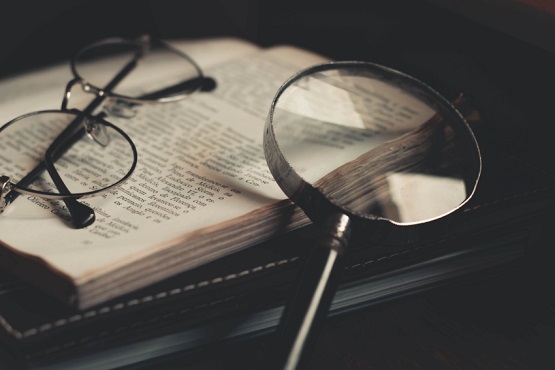In order to prepare a thesis, it is necessary to research a large amount of scientific literature. Unlike their predecessors, modern students do not need to disappear into libraries, hiding behind a mountain of books and encyclopedias. Now almost all the necessary information can be found on the expanses of the Internet.
In this article, we tell how in the abundance of Internet sources to find really useful and relevant content for your essay or thesis.
Before I start to write my thesis, highlight all possible keywords that are relevant to my work. This will help you limit your search and not get distracted by secondary topics. The list of keywords will become for you the semantic core around which your entire paper will be formed.

The introductory part is the section that committee members pay especially close attention to. This part of the report is strictly regulated in the methodical recommendations and should contain the following elements:
- problem;
- relevance;
- the degree of study;
- subject matter;
- object;
- hypothesis;
- objective;
- objectives;
- research methods.
Quite often students forget to pay attention to the relevance, subject, object, hypothesis, goals, and objectives of the study.
The simplest way to indicate the relevance is to answer the question: “why is it necessary to study this problem?
Highlighting the subject and object will allow you to set the boundaries of the topic you are studying. In this way, you will emphasize that you are interested in the specific object that is stated in the title of the paper.
A hypothesis is one of the probable solutions to the identified problem, which requires theoretical justification and confirmation. It is important that the hypothesis is proven, otherwise, you will not defend your diploma. Therefore, it is more reasonable to write a hypothesis after you have conducted practical research.
Also, do not forget to outline 3-4 tasks, as well as the goal – the result, which will lead to the achievement of the successive solution of the mentioned tasks.
If it is still difficult to start writing the introduction, read more carefully the methodological guidelines for the essay or consult with your supervisor.
Table of Contents
Use only current sources
Many technologies today are rapidly becoming obsolete. Therefore, be careful to ensure that the source of the material covers only current data. In this article, we talked about digital libraries of scholarly works from around the world.
Don’t forget that your university, as required by the educational standard, is connected to an electronic library system (ELS), where you can find necessary books, reference books, and scientific journals.
When working with books, be sure to pay attention to the year of publication. Authors quite often supplement and republish their scholarly works. Don’t forget that one of the important criteria for evaluating your work is relevance.
Read periodicals
Many students simply do not know about the existence of official electronic libraries of scientific literature. In our article about social networks for researchers and university professors, we told about the resources where researchers publish their work and share their experiences. Despite the fact that the topic of a diploma is usually quite narrow, one can find quite a lot of useful information on such resources.
You can also find many scientific periodicals in electronic library systems. Do not forget to use filters that sort the sample, so as not to accidentally use literature from archival publications.
When working with scientific sources, do not forget to exercise caution, and check the reputation of authors and publications. Recall that in 2019, the RAS Commission on Countering Falsification of Scientific Research conducted a global purge of the scientific database, which resulted in about 900 journals being withdrawn from publication. This happened due to the detection of plagiarism and unreviewed articles.
Working with official sources
It is best to look for information about organizations and related events on official websites. As a rule, organizations have their own news blogs, where they talk about the results of their activities.
OpenLibrary is a library of works of classic literature, containing over a million materials in various languages.
The Electronic Library of Literature at the University of Toronto, Canada, is a personal project of university professor Maxim Tarnavsky. The Library is designed to provide free and universal access to electronic texts of Ukrainian literature to all interested readers, particularly students outside of Ukraine who have limited access to Ukrainian-language texts.
The Adelaide University Library contains works on literature, philosophy, religion, history, and other subjects, as well as works of art in their original language.
The University of Pennsylvania Library has more than two million free electronic books on topics ranging from history to law to medicine. Books can be downloaded in zip or txt format.
Bartleby provides access to both art and science books.
ERIC, The Education Resources Information Center (ERIC), is funded by the Institute of Education Sciences of the U.S. Department of Education, and provides access to 1 million books in print and CD format, Five million bibliographic records – citations, articles, journals, and other materials related to teaching and learning, of which approximately one-quarter are available in full-text versions.
As we wrote in this article, it is not recommended to use near-scientific journalism. No matter what discoveries they tell us about, we should not use data from such sources in our thesis. It was not uncommon for large publications to publish articles that were not checked by reviewers by mistake or oversight.
When working with sources, attach references to them at once. Familiarize yourself in advance with the requirements for bibliographic lists. It is not uncommon for a student to mention a source, but form it incompletely or incorrectly. There is a normative standard for all types of literature sources.






